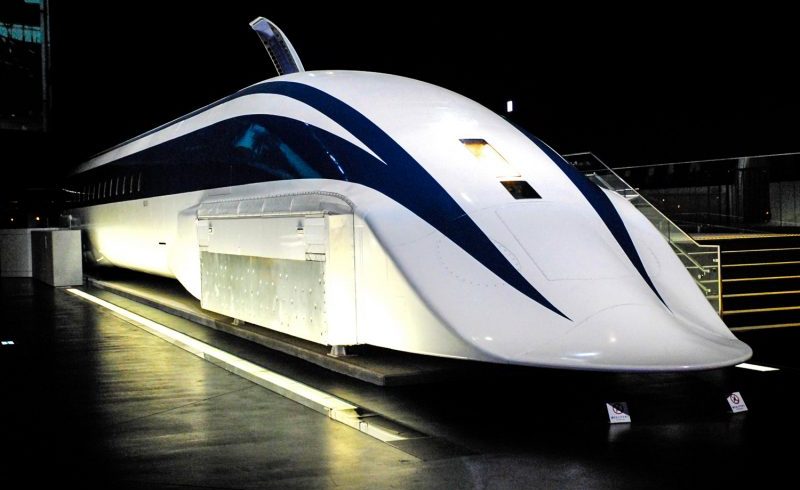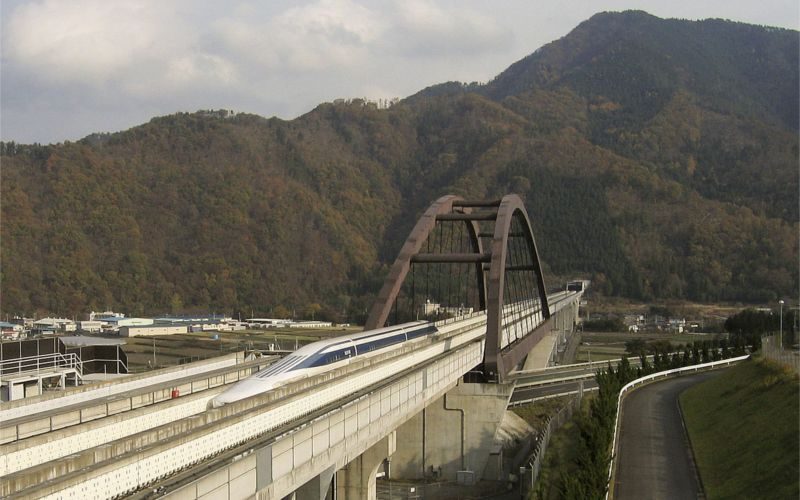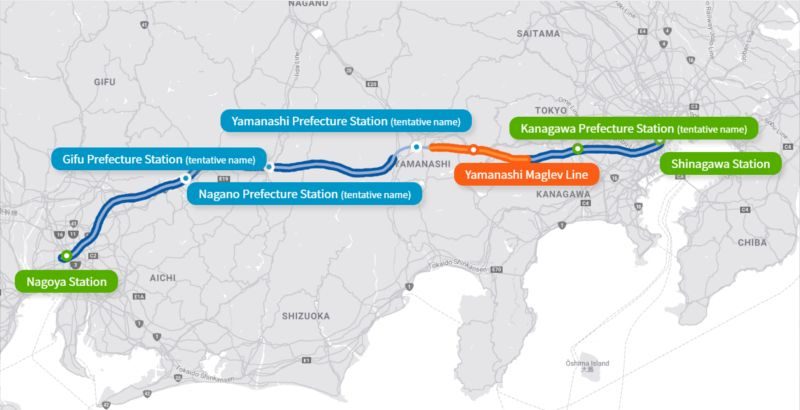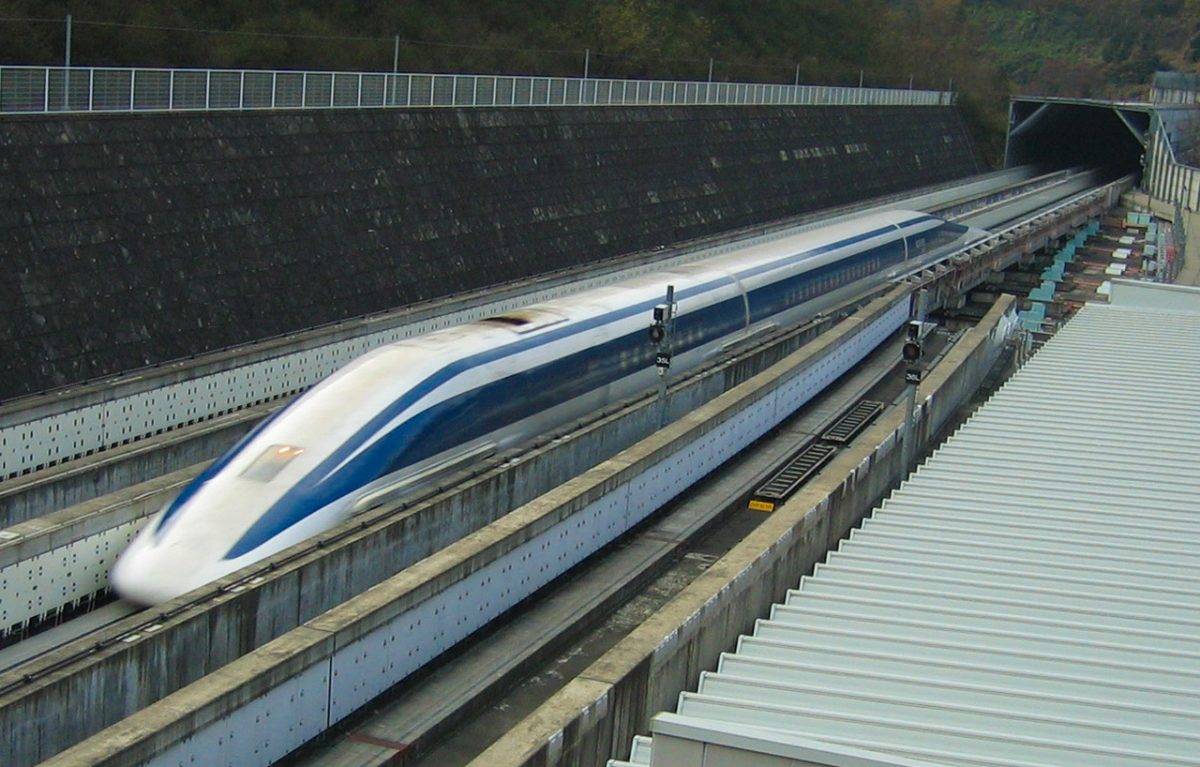Imagine rushing across the Japanese countryside at astonishing speeds. The wheels of your vehicle do not even touch the ground. In fact, you’re floating! This dreamlike experience will soon be a reality thanks to Japan’s famous Maglev bullet trains, the fastest train in the world.
Japan is already well known for its extensive Shinkansen train system, which has been in operation since 1964. The world’s current fastest trains, however, will take a backseat to the Maglev when commuter transportation becomes available in a few short years.
Table of Contents
Maglev trains technology: How it works
SC Maglev, or superconducting magnetic trains, were developed by the Central Japan Railway Company and the Railway Technical Research Institute beginning in the 1970s. Maglev trains work on the principle of magnetic repulsion between the cars and the track.
The word maglev is actually a combination of the words “magnetic” and “levitation.” The magnetic levitation, or floating of the train, is achieved through the use of an electrodynamic suspension system, or EDS.

The rails, or guideways, contain two sets of cross connected metal coils wound into a “figure eight” pattern to form electromagnets. On the train itself are superconducting electromagnets, called bogies. When stopped, the train rests on rubber wheels.
To begin motion, the train moves forward slowly on these wheels, allowing the magnets beneath the train to interact with those of the guideway. Once the train reaches 150 kilometers per hour (93 miles per hour), the magnetic force is strong enough to lift the train 100 milimeters (4 inches) off the ground, eliminating friction to allow for increasingly high speeds.
The same magnetic forces that lift the train also move it forward and keep it centered within the guideway. This is the same technology used by Tesla’s Hyperloop, which makes the ride smooth and the train exceptionally safe.
Japanese Maglev: Fastest train in the world
In April 2015, a manned superconducting Maglev train broke two previous land speed records for rail vehicles. The train was clocked at 603 kilometers per hour or 375 miles per hour. This is much faster than the Maglev trains already operating in Shanghai, China, and in South Korea, which run at speeds of 268 to 311 miles per hour and 68 miles per hour, respectively.
Below is a table with the fastest trains in the world, with the planned Japanese Maglev, topping the ranking.
| Rank | Train Name | Country | Max operational speed | Type |
| 1 | JR SCMaglev L0 Series (planned) | Japan | 505 km/h (314 mph) | Superconducting Maglev |
| 2 | Shanghai Maglev | China | 460 km/h (286 mph) | Maglev |
| 3 | CR Harmony (CRH380A/D) | China | 350 km/h (217 mph) | Conventional high-speed rail |
| 4 | CR Fuxing (CR400AF/BF) | China | 350 km/h (217 mph) | Fully domestic High-Speed Rail |
| 5 | DB ICE 3 (Class 403/406) | Germany | 330 km/h (205 mph) | Conventional high-speed rail |
| 6 | SNCF TGV | France | 320 km/h (199 mph) | Conventional high-speed rail |
Maglev train vs. Shinkansen
Japan’s future Chuo Shinkansen Maglev line is set to outperform the existing Tokaido Shinkansen in both speed and efficiency.
The current Shinkansen line connecting Tokyo and Osaka (the Tokaido Line) has long been a model of high-speed rail. However, the next-generation SCMaglev promises to reduce both travel time and environmental impact even further.
Go over the following table to compare the present Shinkansen trains and future Maglev trains and understand how quickly and efficiently you can travel across Japan using the JR Pass.
| Feature | Chuo Shinkansen (Maglev) | Tokaido Shinkansen |
| Route | Tokyo – Nagoya – Osaka | Tokyo – Nagoya – Osaka |
| Max speed | 505 km/h (314 mph) | 320 km/h (199 mph) |
| Travel time (Tokyo–Osaka) | ~67 minutes | ~150 minutes |
| Main technology | Superconducting magnetic levitation (SCMaglev) | Conventional high-speed rail |
| Emissions | Low | Low |
Did you know? In sixty years of operation, Japan’s high-speed rail lines have had zero fatal accidents, making them one of the safest forms of transportation in the world. The Maglev service intends to keep up that spotless record.
Chuo Shinkansen: future Maglev train line
In 2009, the Maglev system was approved and entered commercial construction. The linear Chuo Shinkansen line to link Tokyo and Nagoya was originally planned to launch by the year 2027. However, it has now been pushed back and may not open until after 2037.

Using revolutionary Superconducting Maglev (SCMAGLEV) technology, the trip is expected to take only 40 minutes. This is faster than either flying between the two cities or taking the one and a half hour trip on the current Tokaido Line, available with the Japan Rail Pass. The proposed route will include stops at stations in Shinagawa, Sagamihara, Kofu, Iida, and Nakatsugawa.
Originally planned to only extend as far as Shinigawa station, the creation of a short underground route to central Tokyo from Shinagawa was approved in 2017. This will make Tokyo Station the terminus of the route.

The original goal of the Maglev project was to produce a train that could cover the route from Tokyo to Osaka in around one hour. This will be achieved when the Maglev line is extended from Nagoya to Osaka, hoped to be in operation by 2037.
The project is currently in the stage of environmental assessment to ensure the track is as close as possible to a straight line to maximize the maglev’s capabilities. Research is also currently being made into suitable locations for stations. Work on the Osaka extension is due to begin immediately after the opening of the Shinagawa – Nagoya section.
Eighty percent of the 286 kilometers (177 mile) Maglev bullet train track will be located underground, passing under urban sprawl and mountainous terrain. The project is expected to cost the equivalent of 55 billion dollars.
When completed, the train will include sixteen carriages capable of holding one thousand passengers. At present, the public have been invited to take part on Maglev test rides. Tourists can visit the SC Maglev Parkway in Nagoya or the Yamanashi Prefectural Maglev Exhibition Center near the town of Otsuki to learn more and view Maglev test runs.
